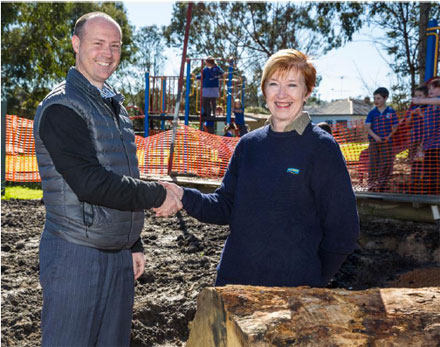
The Rubicon State forest has been a vital resource in supplying quality timber products to Victorians and supporting the regional economy for more than 100 years. Source: Timberbiz
Andy McGuire, Regional Manager VicForests, said that timber harvesting was historically the major industry of the region with more than eight sawmills operating in the early 1900s.
“Over the decades, the volume of harvesting has dramatically reduced as our technology, planning and conservation practices have improved,” Mr McGuire said.
“The area that is still available to be sustainably harvested and regrown in the Rubicon is part of an industry that generates hundreds of millions of dollars and thousands of jobs to regional Victoria every year,” he said.
The Rubicon sits within the Central Highlands Regional Forest Area which generates more than $500 million dollars and directly employs more than 2000 people every year.
The 2018 harvesting operations in the Rubicon State forest will support 70-80 direct jobs and many more down-stream jobs as the timber moves through the supply chain.
Mr McGuire said that VicForests contributes significantly to the Murrindindi Shire through sponsorship grants and timber donations to local community groups and events.
“In the last 10 years, VicForests has contributed over $80,000 to the local community by supporting the Alexandra Truck & Ute Show, several local school projects, sporting clubs, the woodworkers guild, UGFM and various other community groups, Mr McGuire said.
“Many of our staff and contractors live and work in this area so it is important to us that we continue to support the community in any way we can,” he said.
Mr McGuire said that VicForests understands timber harvesting can have some visual impacts and that they take care to minimise these around any important tourist attractions.
“Part of our planning process is to undertake a visual impact assessment to determine how we can reduce the impact our harvesting has on popular views,” Mr McGuire said.
Mr McGuire said VicForests follows a thorough planning process prior to commencing any harvesting and re-grows every area with the same type of forest that was originally there.
“When an area has just been harvested it can be quite confronting to look at however, within a few years the visual impact has been dramatically reduced as the re-planted forest grows back,” Mr McGuire said.
“After around two years of regrowth, the eucalyptus seedlings have already grown to around the height of an average Australian male (1.8 metres),” he said.
Victoria is home to around 8 million hectares of forest, an area the size of Tasmania, of which only 6 percent is available to be harvested for timber.
“The amount of harvesting in the Rubicon State forest has not changed significantly in the last five to ten years, Mr McGuire said.
VicForests understands there are many passionate people either directly or indirectly impacted by timber harvesting and encourages the local community to raise specific concerns in order to incorporate these into its plans where possible.





